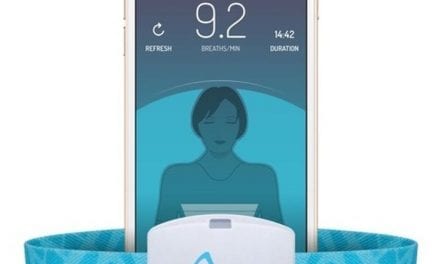Key components involved in scoring infant and pediatric polysomnography includes patience and a special set of skills.

Early in my career, I arrived in the laboratory only to find a child scheduled. Panic stricken, I rushed to pull out the protocol in place for pediatric polysomnography. When the child arrived, I was surprised to see that his mother was a high school classmate of mine. As we reviewed his history of attention deficit disorder, aggressive behavior, and current suspension from grade school, I thought to myself, another problem child. Much to my surprise, a true sleep disorder was uncovered and treated. The child’s behavior and hyperactivity improved dramatically and grades began to improve. Several years later, I received a phone call from the mother. She stated that her son was graduating as valedictorian of his high school class. She was emotional as she passed on her words of thanks. Without the early diagnosis and treatment of this sleep disorder, she was convinced her child would have had a much different outcome. This one incident alone made me passionate about pediatric sleep. What a difference we can make in the life of a child. It is something to become passionate about. With the increase in sleep awareness in the general community, countless laboratories are treading into a new territory: pediatrics. The community is demanding it, the pediatricians are ordering it, and the physicians and technicians need the tools required to effectively diagnose and treat these patients.
In order to effectively score pediatric polysomnograms, it is essential to understand how infant sleep architecture changes during development. Upon falling asleep, a newborn infant goes immediately into REM or active sleep and this accounts for approximately 50% of their total sleep time (TST). Over the first few years of life, the amount of REM sleep decreases to 20% to 25% of TST. Sleep spindles become apparent at approximately 4 to 6 weeks of age. Slow wave sleep, or delta sleep, becomes distinguishable at approximately 8 to 12 weeks of age. By 3 months of age, NREM or quiet sleep may be differentiated into the four distinct NREM sleep states.3
Scoring Infant Sleep
For infants up to 6 months old, sleep states can be classified into active sleep (REM), quiet sleep (NREM), indeterminate sleep, and wakefulness.1 Each state has its own criteria for classification. Recordings of EEG, EOG, EMG, and respiration are essential to differentiate sleep states. Diligent documentation of behavior and video monitoring as well as caregiver interventions are also essential to assist in accurately staging this population of patients. Epochs are scored according to the pattern that occupies more than 50% of the epoch.6
Active (REM) sleep is scored if the EEG pattern demonstrates a low voltage irregular pattern (LVI), mixed (M), or rarely high voltage slow (HVS). Low voltage irregular is low voltage activity ranging from 14 µV to 35 µV. Fast theta activity (5 to 8 Hz) is dominant with significant amounts of slow activity (1 to 5 Hz). High voltage slow is a pattern of medium to high voltage with an amplitude of 50 µV to 150 µV and a frequency of .5 to 4 Hz. Mixed is a pattern that consists of HVS and LVI components. EOG is positive for rapid eye movements (REMs). EMG is low or suppressed for the majority of the epoch. Respirations are irregular, and paradoxical respiratory effort is common. Typical behaviors of this sleep stage are gross body movements, sucking, grimaces, smiles, and vocalizations.1
Quiet sleep is scored if the EEG pattern demonstrates HVS, trace alternate (TA), or mixed. Trace alternate is a pattern of high voltage slow waves (.5-3 Hz) with rapid low voltage superimposed and sharp waves of 2 to 4 Hz between slow waves. This pattern usually disappears within the first month of life. EOG is negative for REM, EMG is high, and respirations are regular. Behaviors consist of mouth movements and possibly occasional startling.1
Indeterminate sleep is scored if the epoch does not meet the criteria for either active or quiet sleep.1
Wake epochs may be subdivided into active wake, quiet wake, or crying. Crying is demonstrated by vocalization with vigorous activity with eyes open or closed. Quiet wake is relative inactivity with eyes open. Active wake is demonstrated with eyes open and gross body movements. There may be vocalizations without crying.1
Respiration is classified as regular or irregular. Regular respiration is defined as a period in which the respiratory cycle varies less than 20 cycles per minute. Irregular respiration occurs when the respiratory cycle varies more than 20 cycles per minute. Scoring of EEG arousals in infants typically follows the abrupt 3-second frequency shift rule.4
Scoring Pediatric Sleep
Staging of pediatric sleep can be accomplished using adult scoring criteria. Despite the use of staging criteria experienced technologists are familiar with, some sleep states in children may be easily confused. For example, children have an increased percentage of overall delta and higher amplitude, which are slower waves than in adults. Because of the high amplitude waves, REM sleep is often mistaken for NREM sleep stages. Sleep stage transitions also differ between adults and children. It is not uncommon for a child to transition from stage 3 or 4 sleep to REM, while this is a rare finding in our adult population. The epoch is scored according to the sleep stage that occupies 50% or more of the epoch (excluding stage 3).
Stage 1. Low voltage, mixed frequency theta (4-7 Hz). EOG shows no eye movement, or slow rolling eye movements may be present. Chin EMG will be high.6
Stage 2. Low voltage mixed frequency EEG with sleep spindles (12-14 Hz) and K-complexes. Both spindles and K-complexes should be at least .5 seconds in duration. EOG shows no eye movement. Chin EMG should be the same or slightly lower than stage 1 levels.6
Stage 3. Delta waves (.5-2 Hz) with 75 µV amplitude occupying 20% to 50% of the epoch. EOG will show no eye movements, and EMG will be active but may fall below stage 2 levels.6
Stage 4. Delta waves (.5-2 Hz) with 75 µV amplitude occupying greater than 50% of the epoch. EOG will show no eye movements and EMG will be consistent with stage 3 levels.6
Stage REM. Low voltage mixed frequency EEG. Sawtooth waves may be present. EOG will show rapid eye movements. EMG will be at the lowest point of the recording.6
Movement time is scored when more than 50% of the epoch is obscured by movement. In order to score movement time, the patient must be asleep immediately prior to and following the movement.6
Wakefulness is described as EEG pattern consistent with beta (>13 Hz) with eyes open, REMs associated with eye blinking, and high EMG tone. Alpha (8 to 13 Hz) predominates when the patient is awake with eyes closed. EOG will show slow rolling eye movements and EMG will remain high.6
Event Scoring
Unlike our adult population, where there are set standards on respiratory event scoring, there continues to be much debate on the subject of apnea criteria in infants and children.
Most centers define significant duration as any respiratory event lasting longer than two breathing cycles.5 All obstructive events should be scored regardless of duration. Obstructive apnea is defined as cessation of oral and nasal airflow associated with out of phase thoracic and abdominal effort. Central apneas are scored if the duration of the event is 20 seconds or longer and is not associated with a sigh or body movement. Any event that is associated with a 4% drop in SaO2 is considered abnormal.2 Although periodic limb movements (PLMs) are rare in our infant and pediatric population, PLMs can be detected with anterior tibialis EMG. Scoring of PLMs in our infant and pediatric population follows standard adult scoring criteria. A PLM sequence is defined as four or more movements in succession, separated by at least 5 seconds but no longer than 90 seconds between any two. Movements must be .5 to 5 seconds in duration.
Scoring infant and pediatric polysomnography requires a special set of skills, patience, and ongoing education. It is recommended that adult laboratories that branch into pediatrics designate one staff member who becomes the pediatric “expert.” The key to becoming a good pediatric polysomnographer is to score as many records as possible and interact with the interpreting physician as often as possible.
Kerry L. Lindquist, RPSGT, RCP, is managing director of Midwest Sleep & Neurodiagnostic Institute (MSNi), Rockford, Ill.
References
1. Anders T, Emde R, Parmelee A. A Manual of Standardized Terminology, Techniques and Criteria for Scoring of States of Sleep and Wakefulness in Newborn Infants. Los Angeles: NINDS Neurological Information Network; 1971.
2. American Thoracic Society. Standards and indications for cardiopulmonary sleep studies in children. Am J Respir Crit Care Med. 1996;153:866-878.
3. Chokroverty S. Sleep Disorders Medicine Basic Science, Technical Considerations and Clinical Aspects. Boston: Butterworth Heinemann; 1999.
4. The Atlas Task Force. EEG arousals: scoring rules and examples: a preliminary report from the Sleep Disorders Association. Sleep. 1992;15:173-184.
5. Ferber R, Kryger M. Principles and Practices of Sleep Medicine in the Child. Philadelphia: WB Saunders; 1995.
6. Rechtschaffen A, Kales A. A Manual of Standardized Terminology, Techniques and Scoring System for Sleep Stages of Human Subject. Los Angeles: UCLA Brain Information Service, NINDS Neurological Information Network; 1968.
7. Sheldon SH, Spire JP, Levy HB. Pediatric Sleep Medicine. Philadelphia: WB Saunders; 1992.




